第1步:
将LVGL v8.0.2下载并解压到TencentOS-tiny\components\gui\LittlevGL如下图:
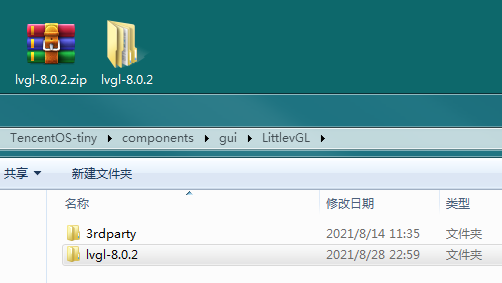
第2步:
我用IAR SYSTEM 是V9.10版本,将不用的文件全部删除掉,保留必要的 .c .h .bin 这些文件夹.
这个可以参靠之前的LVGL V6或LVGL V7版本,或找一个DEMO,总之要明确保留的具体文件.

如上就这么2个文件夹了, 我们先将 lv_conf_template.h 变更为lv_conf.h,并打开改为如下:

第3步:
将TencentOS-tiny\components\gui\LittlevGL\lvgl-8.0.2\examples\porting下的所有文件名'_template'去掉,如下
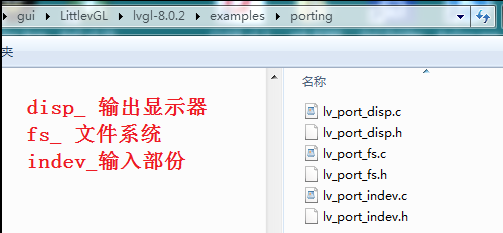
如上内容都是后期要用的, 因为是先移植UI显示的,所以先打开lv_port_disp.h,更改如下:
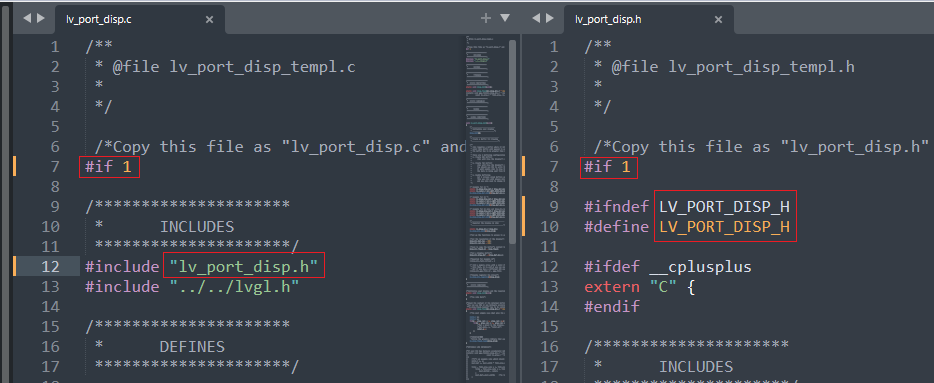
第4步:
将如下内容的.H .C文件和路经,加载到IAR SYSTEM去,这个过程很无聊,要有耐心和细心。。正在进行中。。。
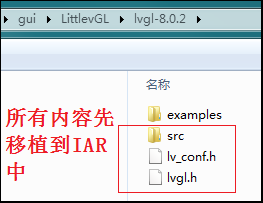 另外先提示一下--->
另外先提示一下---> 
最后在IAR的TencentOS-tiny新增LVGL文件项如下图所示:

假设还不会移植TencentOS-tiny,阅读另一个随记--->腾讯开源精简操作系统TencentOS-tiny与SWM320初试
IAR新增LVGL文件路经为如下:
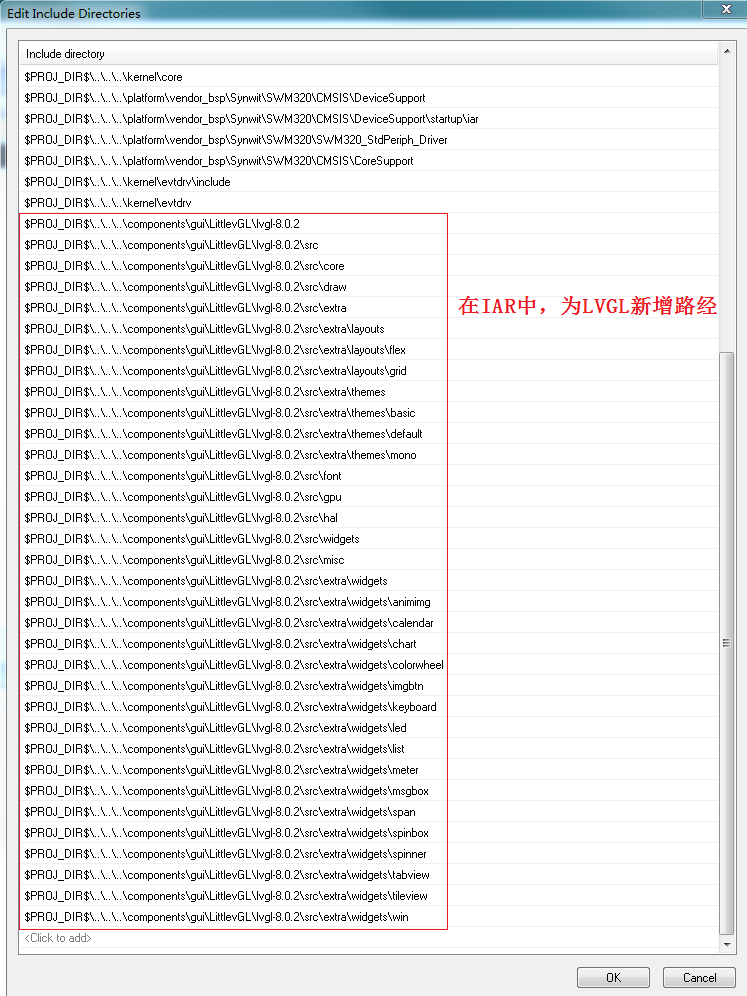
第5步:
为LVGL安装tick心跳,先让它活起来,如下所示:
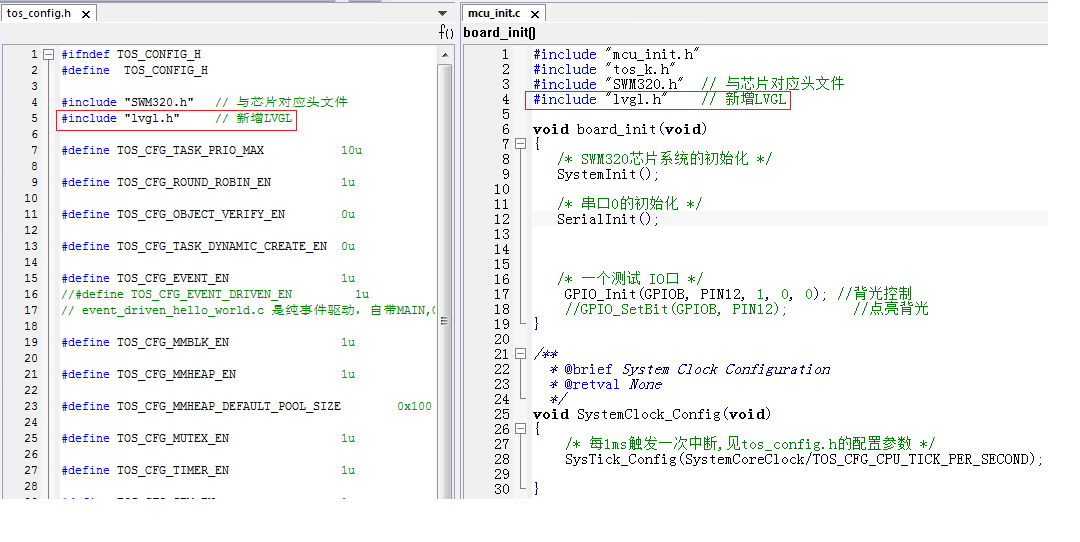
找到tos_config.h内的TOS_CFG_TIMER_AS_PROC项,将它设为如下:
#define TOS_CFG_CPU_CLOCK (SystemCoreClock) // 当前CPU频率 #define TOS_CFG_TIMER_AS_PROC 1u // 时间为函数模式:1
在mcu_init.c内找到systick中断入口函数void SysTick_Handler(void),改为如下:
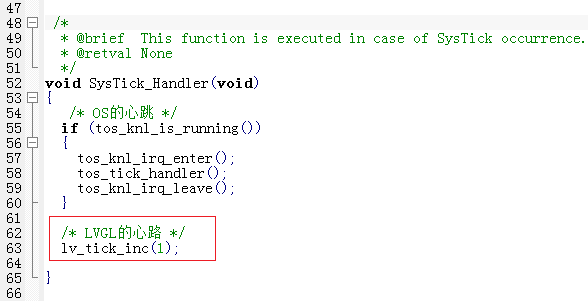
这个时候,LVGL已经拥有心跳了,上面图片打错一个字。。。
第6步:
我们先适配LVGL的lv_conf.h文件,以屏的分辨率为准,新增如下:
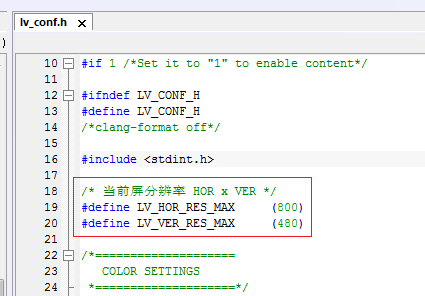
再找到LV_COLOR_DEPTH改为,当前屏为RGB565对应上
/*Color depth: 1 (1 byte per pixel), 8 (RGB332), 16 (RGB565), 32 (ARGB8888)*/ #define LV_COLOR_DEPTH 16
再找到LV_USE_PERF_MONITOR,打开FPS监视.
/*1: Show CPU usage and FPS count in the right bottom corner*/ #define LV_USE_PERF_MONITOR 1
再找到 LV_THEME_DEFAULT_DARK,配置为暗夜模式,默认是灯光模式,这个是LVGL主题,和手机主题一个意思的
/*0: Light mode; 1: Dark mode*/ # define LV_THEME_DEFAULT_DARK 1
然后保存lv_conf.h,这个文件我们已经适配完成了。
下面来适配lv_port_disp.c文件,先从裸机上找到SWM32S的SDRAM LCD驱动的例子,
将芯片LCD外设的参数单独测试好,实现正常刷图显示功能,保证和芯片都是OK的。
在TencentOS-tiny\board\SWM320_DISCOVERY\BSP\Hardware下新建文件,先完成
硬件上的.C .H文件移植,如下所示:

下面来就可以正试适配lv_port_disp.c文件了,直接给出适配好的文件吧,因为之前移植过了
V8.0.1版本,和这个V8.0.2应相差不大。。。。
把TencentOS-tiny\components\gui\LittlevGL\lvgl-8.0.2\examples\porting下的lv_port_disp.c和
lv_port_disp.h加入到IAR工程,并把它们的路经,能走这里应该比较容易了。。。
测试过的lv_port_disp.h文件如下:
/** * @file lv_port_disp_templ.h * */ /*Copy this file as "lv_port_disp.h" and set this value to "1" to enable content*/ #if 1 #ifndef LV_PORT_DISP_H #define LV_PORT_DISP_H #ifdef __cplusplus extern "C" { #endif /********************* * INCLUDES *********************/ #include "lvgl.h" /********************* * DEFINES *********************/ /********************** * TYPEDEFS **********************/ /********************** * GLOBAL PROTOTYPES **********************/ void lv_port_disp_init(void); /********************** * MACROS **********************/ #ifdef __cplusplus } /*extern "C"*/ #endif #endif /*LV_PORT_DISP_TEMPL_H*/ #endif /*Disable/Enable content*/
测试过的lv_port_disp.c文件如下:
/** * @file lv_port_disp_templ.c * */ /*Copy this file as "lv_port_disp.c" and set this value to "1" to enable content*/ #if 1 /********************* * INCLUDES *********************/ #include "lv_port_disp.h" #include "../../lvgl.h" #include "lv_hal_disp.h" #include "SWM320.h" /********************* * DEFINES *********************/ /********************** * TYPEDEFS **********************/ /********************** * STATIC PROTOTYPES **********************/ static void disp_init(void); static void disp_flush(lv_disp_drv_t * disp_drv, const lv_area_t * area, lv_color_t * color_p); /********************** * STATIC VARIABLES **********************/ static uint32_t *lcdbuf_show = (uint32_t *)SDRAMM_BASE; // ok显示 /********************** * MACROS **********************/ /********************** * GLOBAL FUNCTIONS **********************/ void lv_port_disp_init(void) { /*------------------------- * Initialize your display * -----------------------*/ disp_init(); /*----------------------------- * Create a buffer for drawing *----------------------------*/ /** * LVGL requires a buffer where it internally draws the widgets. * Later this buffer will passed to your display driver's `flush_cb` to copy its content to your display. * The buffer has to be greater than 1 display row * * There are 3 buffering configurations: * 1. Create ONE buffer: * LVGL will draw the display's content here and writes it to your display * * 2. Create TWO buffer: * LVGL will draw the display's content to a buffer and writes it your display. * You should use DMA to write the buffer's content to the display. * It will enable LVGL to draw the next part of the screen to the other buffer while * the data is being sent form the first buffer. It makes rendering and flushing parallel. * * 3. Double buffering * Set 2 screens sized buffers and set disp_drv.full_refresh = 1. * This way LVGL will always provide the whole rendered screen in `flush_cb` * and you only need to change the frame buffer's address. */ /* Example for 1) */ //static lv_disp_draw_buf_t draw_buf_dsc_1; //static lv_color_t buf_1[MY_DISP_HOR_RES * 10]; /*A buffer for 10 rows*/ //lv_disp_draw_buf_init(&draw_buf_dsc_1, buf_1, NULL, MY_DISP_HOR_RES * 10); /*Initialize the display buffer*/ /* Example for 2) */ static lv_disp_draw_buf_t draw_buf_dsc_2; static lv_color_t buf_2_1[LV_HOR_RES_MAX * 10]; /*A buffer for 10 rows*/ static lv_color_t buf_2_2[LV_HOR_RES_MAX * 10]; /*An other buffer for 10 rows*/ lv_disp_draw_buf_init(&draw_buf_dsc_2, buf_2_1, buf_2_2, LV_HOR_RES_MAX * 10); /*Initialize the display buffer*/ /* Example for 3) also set disp_drv.full_refresh = 1 below*/ //static lv_disp_draw_buf_t draw_buf_dsc_3; //static lv_color_t buf_3_1[MY_DISP_HOR_RES * MY_DISP_VER_RES]; /*A screen sized buffer*/ //static lv_color_t buf_3_1[MY_DISP_HOR_RES * MY_DISP_VER_RES]; /*An other screen sized buffer*/ //lv_disp_draw_buf_init(&draw_buf_dsc_3, buf_3_1, buf_3_2, MY_DISP_VER_RES * LV_VER_RES_MAX); /*Initialize the display buffer*/ /*----------------------------------- * Register the display in LVGL *----------------------------------*/ static lv_disp_drv_t disp_drv; /*Descriptor of a display driver*/ lv_disp_drv_init(&disp_drv); /*Basic initialization*/ /*Set up the functions to access to your display*/ /*Set the resolution of the display*/ disp_drv.hor_res = LV_HOR_RES_MAX; disp_drv.ver_res = LV_VER_RES_MAX; /*Used to copy the buffer's content to the display*/ disp_drv.flush_cb = disp_flush; /*Set a display buffer*/ disp_drv.draw_buf = &draw_buf_dsc_2; /*Required for Example 3)*/ //disp_drv.full_refresh = 1 /* Fill a memory array with a color if you have GPU. * Note that, in lv_conf.h you can enable GPUs that has built-in support in LVGL. * But if you have a different GPU you can use with this callback.*/ //disp_drv.gpu_fill_cb = gpu_fill; /*Finally register the driver*/ lv_disp_drv_register(&disp_drv); } /********************** * STATIC FUNCTIONS **********************/ /*Initialize your display and the required peripherals.*/ #include "lcd_RGB565.h" #include "lv_disp.h" static void disp_init(void)/////////////////////////////////////////////////// { /*You code here*/ lcd_rgb_init(); LCD->SRCADDR = (uint32_t)lcdbuf_show; //显示 LCD_Start(LCD); } /*Flush the content of the internal buffer the specific area on the display *You can use DMA or any hardware acceleration to do this operation in the background but *'lv_disp_flush_ready()' has to be called when finished.*/ static void disp_flush(lv_disp_drv_t * disp_drv, const lv_area_t * area, lv_color_t * color_p) { /*The most simple case (but also the slowest) to put all pixels to the screen one-by-one*/ uint32_t temp; uint32_t index; uint32_t pos; lv_coord_t x; lv_coord_t y; //y=area->y1; for(y=area->y1; y <= area->y2; y++) { //x = area->x1; for(x=area->x1; x <= area->x2; x++) { /* Put a pixel to the display. For example: */ /* put_px(x, y, *color_p)*/ //drawpoint(x, y, color_p->full); index = (y*LV_HOR_RES+x) / 2; pos = ((x%2) == 0 ? 0 : 16); temp = lcdbuf_show[index]; temp &= ~(0xFFFF << pos); temp |= (color_p->full << pos); lcdbuf_show[index] = temp; color_p++; } } /*IMPORTANT!!! *Inform the graphics library that you are ready with the flushing*/ lv_disp_flush_ready(disp_drv); } /*OPTIONAL: GPU INTERFACE*/ #else /*Enable this file at the top*/ /*This dummy typedef exists purely to silence -Wpedantic.*/ typedef int keep_pedantic_happy; #endif
将mcu_init.c更改为如下,主要是在 board_init()对LVGL进行初始化。。
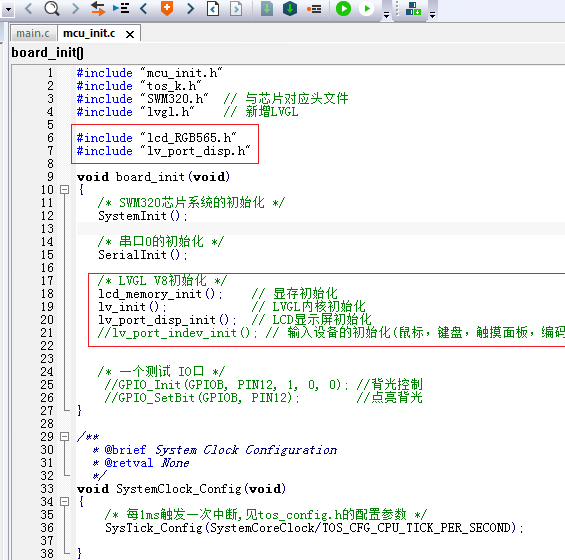
然后再对TOS之前软件定时器进行更改,main.C只开启软件定时器测试,如下:
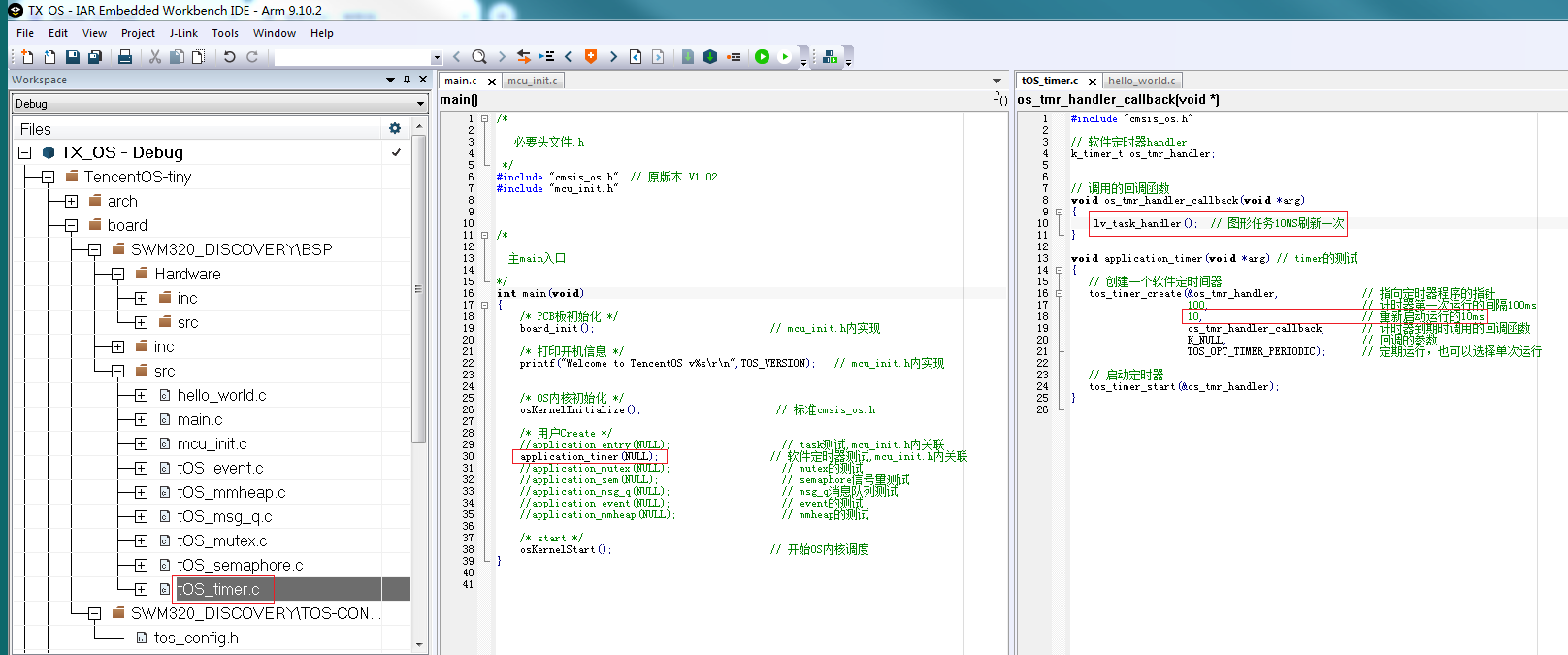
最后在线仿真看效果,可以看到显示屏有FPS了,说明TOS与LVGL移植成功。。。
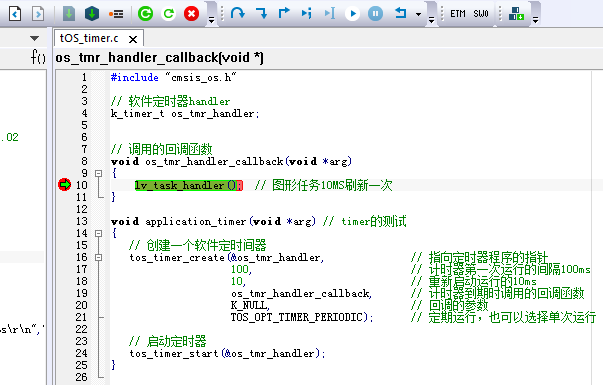
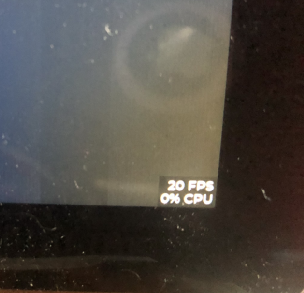
如果要下载源码,请到华芯微特技术支持群492524359,已经上传QQ群里了,如下所示

接下来可以跑跑\lvgl-8.0.2\examples的DEMO,也可以自行学习LVGL的其他功能,结束了,再见!!



